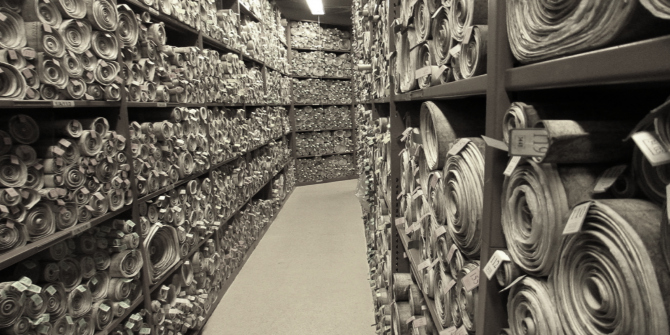
Against the backdrop of the nineteenth century scramble for the Amazon basin’s precious resources, Euclides da Cunha – geographer, political theorist, and one of Brazil’s most celebrated writers – led an expedition to the furthest reaches of the river. The Scramble for the Amazon tells the story of da Cunha’s journey, the unfinished novel born from it, and the global strife that formed the backdrop for both. It is an interesting read, a rare book that inspires the imagination and intellect, writes Elaine Kellman. But above all, it is a book describing a hugely important period in Amazonian politics and geography using the words of a key participant from that period.
 The Scramble for the Amazon and the Lost Paradise of Euclides da Cunha. Susanna B Hecht. University of Chicago Press. June 2013.
The Scramble for the Amazon and the Lost Paradise of Euclides da Cunha. Susanna B Hecht. University of Chicago Press. June 2013.
Euclides da Cunha’s life met a dramatic end. Of precarious health, racked by fever and paranoia, half-deranged and plagued by hallucinations of a spectral woman in white, he confronted his unfaithful wife, Ana Ribeiro, and her younger lover, Dilermando de Assis. A gun battle ensued with both men shot. While Dilermando survived, da Cunha’s life ebbed away, as he bled to death from fatal chest wounds (ch22).
Although Brazilian writer Euclides da Cunha is a central focus of The Scramble for the Amazon and the Lost Paradise of Euclides da Cunha, Hecht’s work is more than just a biography detailing the “gothic melodrama” of da Cunha’s life. Described by UCLA Professor of Urban Planning Susanna B. Hecht as “part biography, part social history, part nature writing, part geographical translation” it is a 600-page, 24-chapter masterpiece, detailing a forgotten time of Amazon exploration and competing imperialisms in the 19th and early 20th centuries.
Da Cunha was sent to the Amazon to survey and map one of the longest tributaries of the Amazon, the Purús. Appointed by Baron Rio Branco, Da Cunha was charged with developing the nationalist/imperial narrative that would shape Brazil-Bolivia-Peru boundary mediations by unveiling hidden histories of conquest and settlement. Luckily for us, he was also told to describe anything interesting he passed along the way.
Ever the opportunist, Da Cunha saw his survey position as the perfect basis for a new literary work. Provisionally entitled O Paraíso Perdido, he intended it to be a nationalist synthesis of “geography, philosophy, biology and journalism” that would “unveil the Amazon’s explorers, spies, natives and brutal geopolitics”. Paraíso Perdido was also intended as a companion work to Da Cunha’s acclaimed Os Sertões, a non-fictional account of the Brazilian government’s military expeditions against the rebellious village of Canudos (ch3-5). Canudos was destroyed, with all that remained: “a trench of the dead, plastered with blood” (p78). Os Sertões however, is celebrated not only for its brilliant writing but because of the interesting change in Da Cunha’s authorial voice, “…initially sneeringly superior insisting on inevitable victory of Brazil’s coastal civilisation and the white race over the pathetic barbarism of the mestizo backlanders, [he] increasingly empathises with the doomed rebels…” (p5).
Of course, Da Cunha’s murder meant he was unable to complete Paraíso Perdido – and only fragments remained of his Amazon writings. However, Hecht has painstakingly translated and compiled these “insightful, beautiful, sometimes ranting” fragments, recreating in The Scramble for the Amazon the potential core of Da Cunha’s Paraíso Perdido. Influenced by Rebassa, for Hecht, context is key. These fragments are therefore placed “in a larger context of geopolitics, travel genres and emerging elements of both natural and colonial science and ethnography” – contextualising Da Cunha’s legacy and clarifying the purpose of his prose (pp485-490).
Unlike the “Scramble for Africa”, the “Scramble for the Amazon”, as a concept, has been relatively underexplored (p83). During Da Cunha’s time the motivating factor behind the territorial battles in the Amazon was an increased global demand for rubber caused by industrialisation in Europe and the US (Ch14). The Scramble for the Amazon is unique in that it details not only the diplomatic face of the territorial-wrestling – noting in particular the Peru-Bolivia-Brazil arbitrations for the 720,000km of rubber-rich lands surrounding the Purús – but juxtaposes this with fascinating accounts by Da Cunha of the lives of those extracting the rubber, the “caucheiros” and “sertanejos” (Ch21), as well as the rubber barons.

This battle for rubber, and land, also held tragic consequences for the indigenous population. For example, Da Cunha describes, with almost painfully understated pathos, a meeting between the head of the Mascho Indians and the infamous rubber baron Fitzcarraldo. Trying to intimidate the native head, Fitzcarraldo showed him weapons and equipment and boasted about the various tribes Fitzcarraldo had “subdued”: “The sole response of the Mashco was to inquire what arrows Fitzcarraldo carried. Smiling the explorer passed him a bullet… The native…tried to wound himself with it, dragging the bullet across his chest. Then he took one of his own arrows and, breaking it, thrust it into his own arm. Smiling and indifferent to the pain he proudly contemplated the flowing blood that covered the point. Without another word he turned his back on the surprised adventurer, returning to his village with the illusion of a superiority that in a short time, would be entirely discounted” (p435).
Hecht also mentions the devastating effect caused by the bio-piracy of rubber by Englishman Henry Wickham. Brazil severely punished any smuggling of seeds from its borders, but Galeano in Open Veins of Latin America (p89) describes how Wickham invited the authorities to a grand banquet where he persuaded them he was carrying a collection of rare orchid bulbs in a hermetically sealed cabin at a special temperature – and if opened the flowers would be ruined. The seeds reached Liverpool and “forty years later Amazonian prosperity vanished in a puff of smoke” – as the trees the English planted in its colonies from the stolen seeds reached maturity. Perhaps the fortunes of the Amazon would be very different if not for this act.
It is impossible to explain or adequately cover in a short review the breadth of material in The Scramble for the Amazon. Although initially daunting in scope, this book is relevant to various fields of study, not least history, anthropology, geography, politics, sociology and development. Not only will any reader discover the fascinating life of Da Cunha, but also: a delineation of best practice in territorial dispute negotiations; an exposition of the treaties slicing up Amazonian; a geographical exploration – and travel novel; tales of conquest, settlement and slavery; and an exploration of the impact of world development and politics on the Amazon region – including the sometimes foolhardy Amazonian intentions of Europeans and North Americans.
The Scramble for the Amazon counterpoises stories of unimaginable pathos, conflict and violence alongside vignettes of hope. These are described not only in Da Cunha’s incandescent style, but also in Hecht’s unique literacy style – an unusual style for an academic book of this magnitude. It is an interesting read, a rare book that inspires the imagination and intellect. But above all, it is a book describing a hugely important period in Amazonian politics and geography using the words of a key participant from that period. Only three weeks after Da Cunha’s death, the current boundaries between Brazil and Peru were drawn – based largely on his reports and maps. The importance and legacy of this now little-known writer therefore remains: “inscribed in every map of Brazil and in his history of a land that is always seen to be without one” (p489).
—————————————-
Elaine Kellman is a PhD candidate at the Dickson Poon School of Law, King’s College London. Elaine’s doctoral research is focused on natural resources (food, water, energy and minerals) and international trade law, and explores the equitable allocation and distribution of these essential natural resources through trade. Elaine holds an LLB (Laws) and LLM (Public International Law), both from King’s College London, as well as postgraduate practice diplomas in International Human Rights and International Competition Law from the International Bar Association/College of Law. Elaine tweets @ElsKells. Read more reviews by Elaine.








1 Comments